Learning Polish (TUTORIAL: Build a Plan, Find Resources, and Advice)
by Marissa Blaszko · January 7, 2022
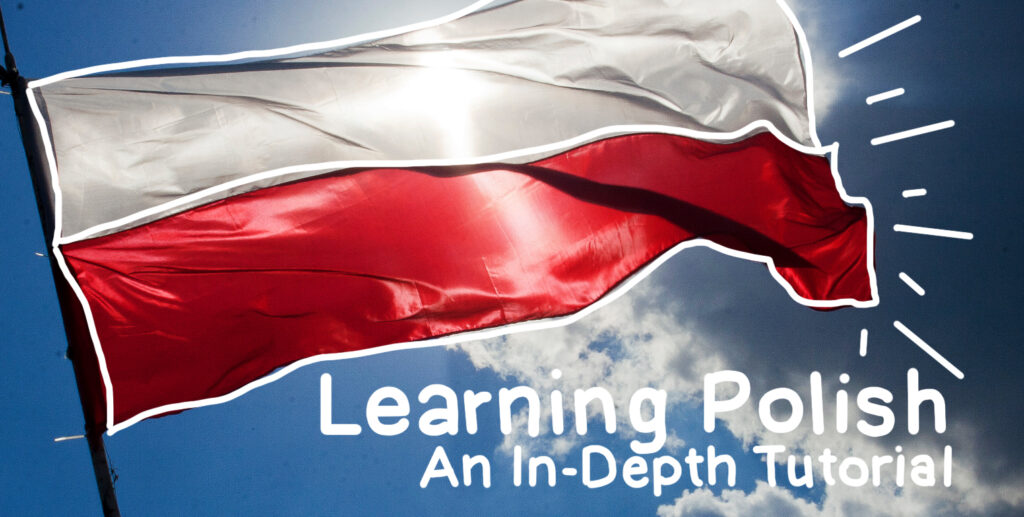
The hardest step in learning Polish is figuring out how to learn Polish.
By this I mean: the first step in learning a new language is by far the hardest.
So in this article, I’ll make sure you not only have all of the best tools and resources you need to learn Polish, but have an action plan to use them and are prepared for some of the most common problems Polish language learners have.
THIS ARTICLE IS AN INTERACTIVE TUTORIAL.
To fully use it, grab a pen and paper and look out for these two boxes:
✏️ REFLECT: When you see this box, pause and think about what you just read. I highly recommend writing it down in a notebook you’ll dedicate to learning Polish.
✅ PLAN: When you see this box, stop to make a plan. Again: I recommend doing this in a notebook that you’ll use for studying Polish.
FYI, I’m affiliated with some (but not all) of the products I recommend. This means I may receive a small commission on sales at no cost to you.
Steps for Learning Polish
(Table of Contents)
Before we start, I’ll introduce myself: a real human who has been learning Polish for over a year.
This tutorial was built based on my own experiences becoming fluent in Spanish, French, Catalan, and Portuguese, but also based on my own first-year victories (and frustrations) learning Polish.
Here’s a bit more about what my first year has looked like using this tutorial:
Okay: now let's get started learning Polish.
1. Why do you want to learn Polish?
The first thing we need to explore in this tutorial is why learning Polish is important to you.
That’s because learning Polish is an adventure. And when you start learning a new language, you need to plan your destination.
For the rest of this article, we’ll be using the metaphor about travel and adventures to talk about learning Polish.
But let’s figure out why you want to embark on such a wild adventure to begin with.
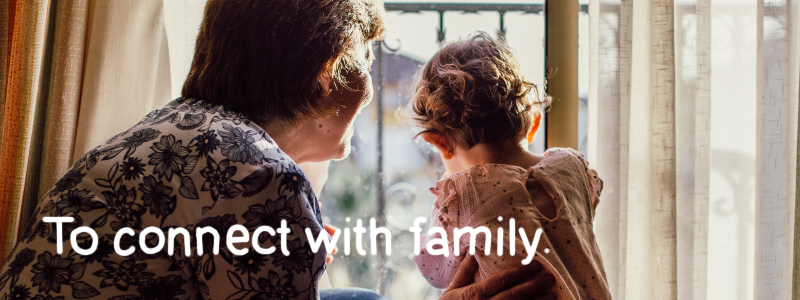
If you have Polish family, they might speak English well. (Or not.)
But to you, learning Polish may look like conversations over dinner, revisiting old photo albums, or even meeting aunts and uncles for the first time.
Why does this matter?
You’ll probably want to focus a lot on vocabulary about daily life. Business or technical language might not be as good of an investment as vocabulary about food, family, and friends.
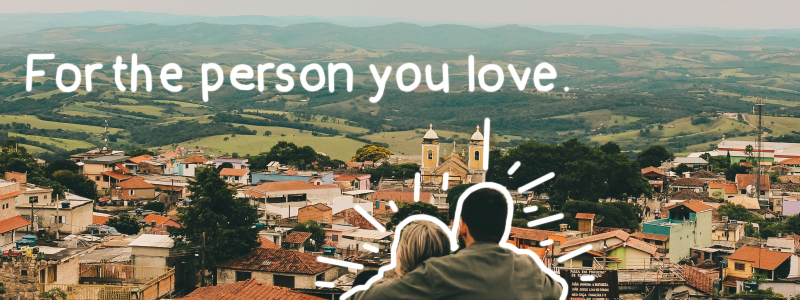
If you have a significant other, Polish culture might be as new to you as the language.
Maybe you want to raise bilingual kids, maybe you want to travel the world child-free.
But no matter what your future looks like, diving into Polish food, history, and traditions will probably be just as important to you as learning Polish itself.
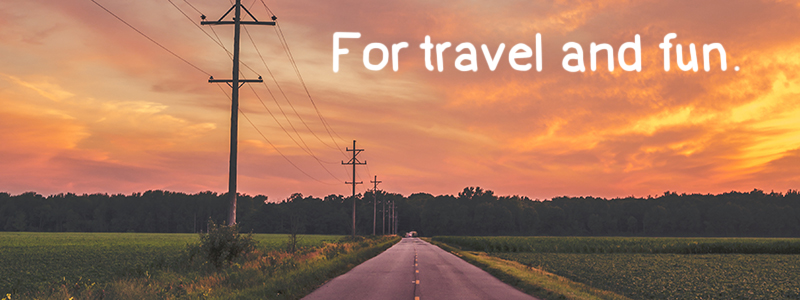
If you want to learn a new language for the joy of exploration, Poland is full of hidden gems–from history to food to literature to linguistics.
Why might your destination be different than that of other learners? Because if you only want enough vocabulary to travel around with, you don’t need very much vocabulary at all!
But if you’re trying to read Polish novels and watch Polish films? You’ll probably want to go a lot deeper with the language than anyone else on this list.
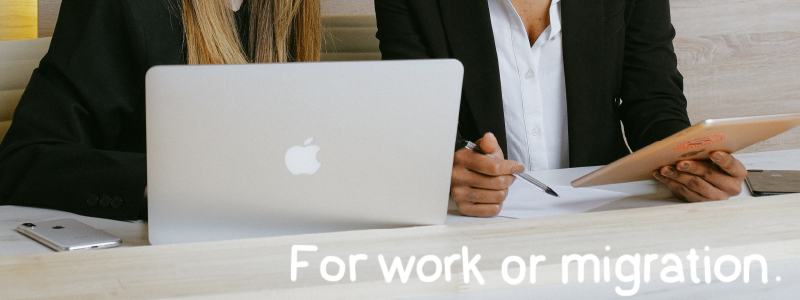
If you need Polish for work or migration, you likely have the most rigid goal of all: passing a Polish language proficiency exam.
Right away, you should consider going through the language methodically and with a tutor. This way, you won’t waste several months learning the names of Polish animals and vegetables when what you really need is vocabulary about history, politics, tourism, or business.
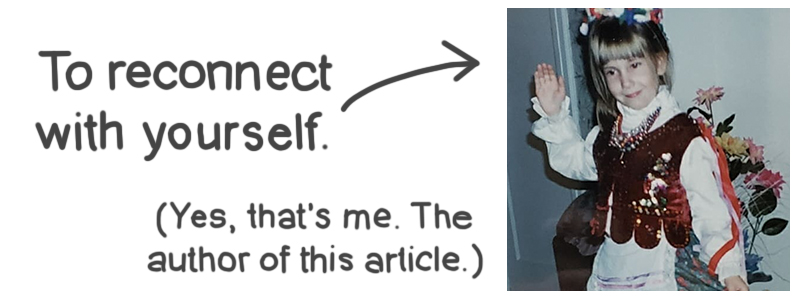
Finally, there are people like me: heritage language learners.
If you’re a person who spoke Polish as a kid (but doesn’t now), you’re in for a totally different journey.
Check out my article about relearning a language for more information, but the most important thing is that you define your end-goal daydream.
If you’re relearning a heritage language simply because you “should”, it’s going to be a lot harder than because you want to speak better with cousins, enjoy Polish films, or have some more-specific daydream in mind.
✏️ REFLECT: Which of these reasons resonates with you? Write down your daydream.
Where do you see yourself with your future Polish? Who are you with? What are you doing? What are you talking about?
2. Find Your Polish Learning Guide
In this section, we’re going to help you pick out a map for your language learning adventure.
So far we’ve decided where you want to end up: your vision goal and reason for learning Polish.
Now we just need to know how to get you there.
What type of map do you want?
For finding your way on an adventure in a foreign land, there are paper maps, GPSs, or a tour guide.
For finding your way through your Polish learning journey, there are also three main types of guides you can use.
Let’s go into the strengths and weaknesses of every type so we can figure out what would be best for you personally.
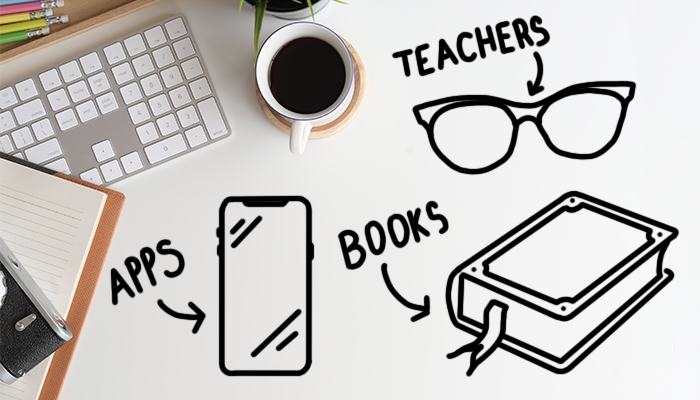

Apps
Language learning phone apps are by far the most popular resource right now. But, unlike teaching methods used in publishing companies or classrooms, there is almost no information about their long-term student success.
PROS: Apps are cheap, portable, and fun. They make language learning seem easy and can be an entryway into experimenting with a language.
CONS: How does a free app make it’s money? By keeping you hooked and selling ads–not by actually teaching you a language. The best language learning apps are ones that resemble fun flashcards but are normally low-tech and $3-10/month.
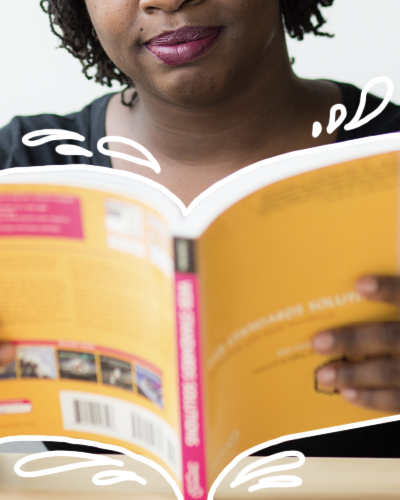
Books
Anyone who learned a language in school as a child is probably familiar with large, colorful workbooks and endless exercises. While they don’t have the same hold-your-hand guidance as apps, they often cover much more material and are not much more expensive long-term.
PROS: Textbooks are the most extensive type of guiding resource, with hundreds (if not thousands) of new words and loads of exercises. You can pace yourself and continuously review material, and use them in conjunction with more fun activities such as beginner podcasts, conversation exchanges, or even apps.
CONS: Just because you finished a chapter doesn’t mean you can then use that material in a conversation. Textbooks require discipline and need to be supplemented by additional exercises like conversations, flashcards, of freewriting. (Plus: as you’re starting, you might be plagued with self-doubt since they are so independent.)

Classroom Teachers
University or adult education programs are often taught by amazing language professionals. The price tag can be a shock to some, but for learners who struggle to work independently the oversite (and potential friendships) can be hugely beneficial.
PROS: If you continue in the same program long-term, there will be little doubt of any confusion, missed lessons, or straying off the education path. Especially if you can continue with the same teacher, having a professional (and other students) around is great for some learners.
CONS: Some learners (like myself) freeze up on tests, don’t understand typical teaching methods, or simply find their attention drifting when in a group. Plus, depending on where you live, there might not be any Polish classes–or, in the US, they might be cost-prohibitive.

Independent Teachers
Independent teachers are the secret weapon of polyglots. From informal tutors to university PhDs, you’d be surprised who’s teaching online–and how affordable they are compared to group classes.
PROS: With an independent tutor, you never have to be confused. You can review the same material over and over until it sticks, plus get in a ton of speaking practice so you start making faster progress right away. They also start for as little as $12/hr on some online platforms (which we’ll get into soon) so for most people they are accessible as part of a weekly budget.
CONS: Not all teachers have the same quality–and you often don’t know which until you’ve experimented with a few. Although you can use tutors as a supplementary resource, if you want to use one as your guiding resource you need someone who gives good grammar explanations; gives you plenty of homework; and has a plan to get you into at least the intermediate level. But like I said: you’ll probably have to start with 3-4 to see which is the best fit.
That all said, we can also judge their strengths and weaknesses by who you are and what your situation is.
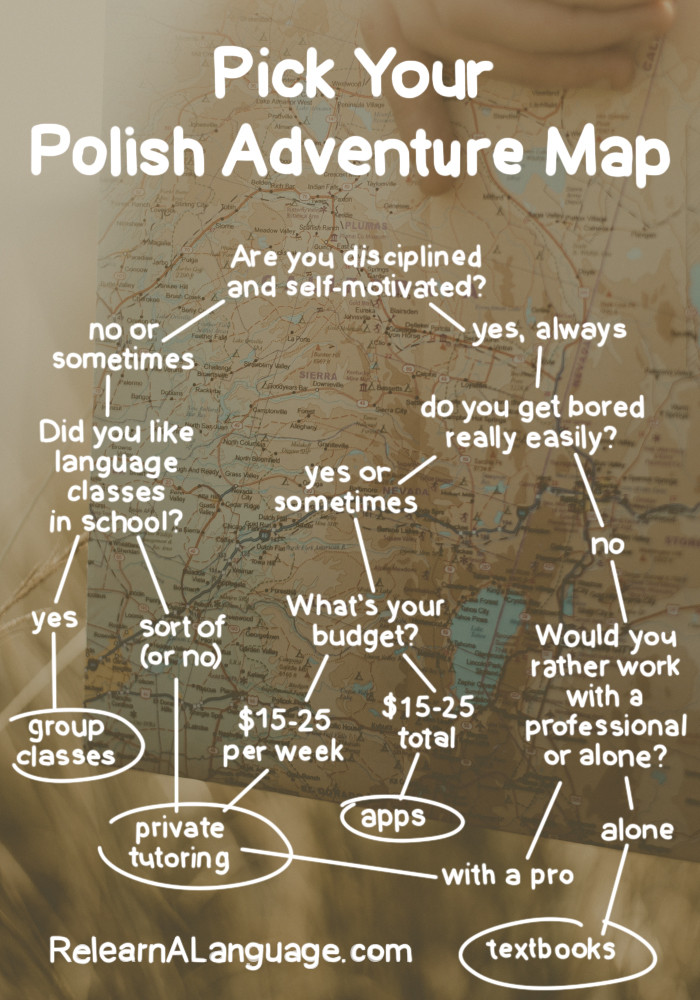
Now, none of this is set in stone.
In language learning, experimentation is always going to be key.
I personally use a mix of various guiding resources at different levels of my language learning.
As a beginner I like apps and classes; once I’ve learned a few lessons I like to start with private tutors; and every once in a while I like to sprinkle in a class.
So in this next section, we’re going to go over my reviews of a few different Polish learning resources and who might benefit from what.
✅ PLAN: Which types of resources do you want to look into? Are any totally unappealing to you?
Polish Resources Reviewed
Unlike on other blogs, none of these reviews are sponsored or paid for. These are simply things I have tried and my opinions on them as a person who has learned multiple languages.
Complete Polish (Teach Yourself®)
Type: Textbook
Skills: Grammar, Listening
Length: Beginner – Intermediate
Exercises: Some
My personal rating: ⭐ ⭐ ⬜ ⬜ ⬜
The Complete Teach Yourself series are some of the most well-known language learning resources, so I’ll start here.
The book is a nice reference, has a lot of listening exercises, and comes equipped with plenty of short phrases that you’ll love.
But unfortunately, it absolutely lacks exercise.
So unless you want just reference material (or flashcard fodder) I don’t think you’ll get very far with it.
Skills: Grammar, vocabulary, reading, listening
Length: Complete beginner
Exercises: Activities, listening
My personal rating: ⭐ ⭐ ⭐ ⭐ ⭐
The Krok po Kroku book has been my favorite Polish learning resource to date.
Through stories, comics, great audio files, and plenty of activities, it takes you through the first two levels of Polish beginner material with a ton of practice.
I highly suggest getting both the textbook and the workbook since the textbook alone doesn’t have enough exercise.
I also suggest pairing it with flaschards and a tutor to get the most of it, since one of the hardest language learning paradoxes is that you’re never truly ready to start speaking until you’ve already started speaking.
The biggest drawback is that it’s monolingual Polish, so if you have no previous experience with Polish (or language learning) you’ll 100% want a professional to help you along.
Skills: Grammar, speaking, writing, listening, reading
Price: $33 + $22
Length: Complete beginner
Exercises: Speaking, reading, listening
My personal rating: ⭐ ⭐ ⭐ ⬜ ⬜
Type: App
Skills: Speaking
Price: $8/month (free through some libraries)
Length: Very beginner
Exercises: Translation, speaking
My personal rating: ⭐ ⭐ ⭐ ⬜ ⬜
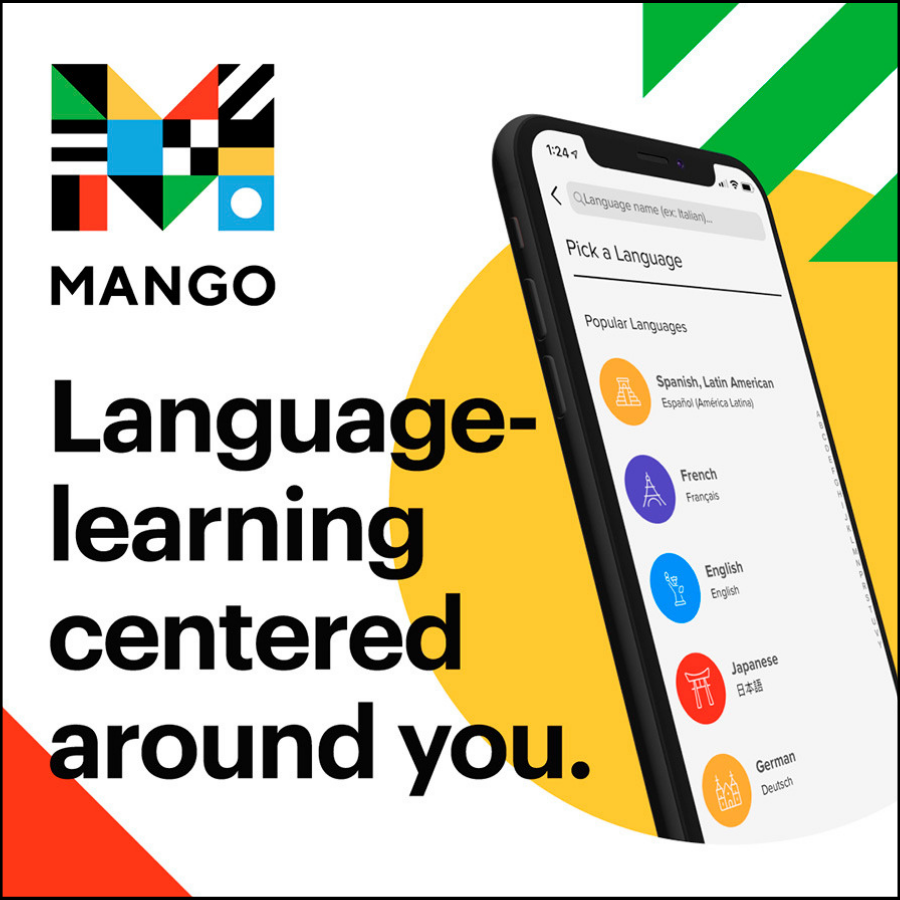
The Mango Language app is a great repeat-after-me styled app for memorizing phrases and vocabulary.
There isn’t that much Polish, but it’ll give you a ton of great phrases if your goal is traveling and surviving in Polish.
For the $8/month, it’s a fun way to play with the language when you’re too tired to use some more thorough resource, but it’s explanations aren’t amazing so it doesn’t give you much more than some fun phrases (even though it teaches them to you really, really, really thoroughly).
Michel Thomas Polish (Foundation + Advanced)
Type: Audio Tapes
Skills: Grammar, speaking
Price: $80 + $20 (Price may vary)
Length: Beginner – Intermediate
Exercises: Speaking
My personal rating: ⭐ ⭐ ⭐ ⭐ ⭐
The Michel Thomas audio course is available through Audible, as an independent language app, the iTunes store, or CDs. It’s think-and-repeat method is fantastic for learning notoriously tricky Polish verbs (the foundation course) and Polish cases (the Advanced course).
I highly, highly recommend it in conjunction with a more thorough guiding resource, but it’s my favorite app-ish-thing on this list.
(For a full review and demo, you can watch the embedded video above.)
Type: Online Course
Skills: Listening, grammar
Price: $35/month
Length: Beginner – Advanced
Exercises:
My personal rating: N/A (the only product here I haven’t personally used)
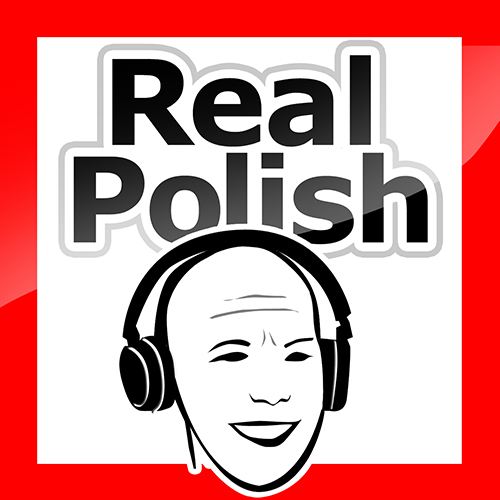
Real Polish is the only product on this list I haven’t tried, but it comes highly recommended by people I know who have used it.
My understanding is that through listening exercises and some grammar explanation, you see and hear increasingly-harder Polish as you absorb it.
But as I said, I haven’t tried it–just felt that it should be on this list because of how popular it is.
Type: Private Teachers
Skills: Speaking, listening*
Price: Average $20/hr*
Length: Any level
Exercises: Depends on teacher
My personal rating: ⭐ ⭐ ⭐ ⭐ ⬜*
*Depends on the teacher
Type: App
Skills: Vocabulary
Price: $3/month
Length: Hundreds of words
Exercises: Active recall, flashcards
My personal rating: ⭐ ⭐ ⭐ ⭐ ⬜
University Classes
Type: Course
Skills: Grammar, vocabulary (may vary)
Price: Depends on Country
Length: Beginner – Mastery
Exercises: Homework, quizzes

University classes are the most structured way to learn Polish, but probably the slowest. What you cover in 2 semesters in most universities would be what we call “Polish A1”–that is, the first half of beginner Polish. (The second half being A2.)
With other programs listed on here, you’d cover A1 within 3-6 months.
So if you like structure, go for it! Otherwise, consider other options.
Community Classes
Type: Course
Skills: Grammar, vocabulary (may very)
Price: $25-150 / course
Length: Beginner – Intermediate
Exercises: Homework, quizzes

Classes in community centers, adult education centers, or other institutions can be laxer (and a lot cheaper) than university classes. But unlike university classes, the learning track may drop off after the beginner level, leaving you stranded. Plus, they are likely for less hours (and with less oversite) than university classes, although in some instances may be taught by the same professors.
✏️ REFLECT: Which of these resources might fit best with your personal Polish goals? Why? Which might not be as helpful? Why?
✅ PLAN: What 2-3 guiding resources do you want to use for learning Polish? When will you buy or schedule them? When will you start to use them?
4. Learn Polish with At-Home Immersion
Now that we’ve found your Polish “adventure map”, it’s time to start enjoying the scenery on your journey!
Language immersion is not only going to help you learn Polish, but keep you motivated long-term.
You have two immersion approaches you can take:
1. Find immersion resources that are fun, even when you can’t understand the language.
This is more than likely music, TV, or films. The goal is to keep yourself curious and developing an ear for the language, but not get bored or overwhelmed.
2. Find immersion resources which you can sort of or mostly understand.
With some practice, this will probably be podcasts, YouTube channels, or books made especially for Polish learners. The goal is to give it your full attention but to find something that you can mostly understand so you don’t just hear some wall of sound.
Learning Polish with Music
In the scheme of popular music, Polish music is a genre of it’s own.
When searching “Polish music” online you’ll most likely run into the pop music known as Disco Polo, but here are a few contemporary artists from a variety of genres that might be a good launching point for language learners.
Artist: Enej
Genre Tags: pop, folk
If you like them, be sure to check out: Chłopcy Kontra Basia, Sutari, Hańba!, Żywiołak
Artist:
Genre Tags: rock, dance, rap
If you like them, be sure to check out: Taco Hemmingway, Blacha, Jan-rapowanie, Bitamina, Linia Nocna
Artist: Daria Zawiałow
Genre Tags: pop
If you like them, be sure to check out: Viki Gabor, Julia Pośnik
Learning Polish with Podcasts
While there are currently no Polish podcasts for absolute beginners, here are a few recommendations for advanced-beginners (aka: learners who have some ability and vocab, but who aren’t yet fluent).
Learning Polish with Reading
Some of the textbooks I mentioned above are filled with amazing dialogues and reading exercises. But to really sink your teeth into learning Polish through literature? Check out some of these books made just for Polish students.
Polish Short Stories: 11 Simple Stories for Beginners
Author: Simple Language Learning
Year: 2020
Genre: Short Stories
Length: 136pg
Portret Nataszy: A to długa historia
Author: Paulina Lipiec, Polski Daily
Year: 2021
Genre: Short Stories
Length: 30pg
First Polish Reader for Students
Author: Wiktor Kopernikus
Year: 2019
Genre: Short Stories
Length: 136pg
Learning Polish with YouTube
YouTube is one of the most underrated language learning resources out there–and not just for grammar explanations. Check out these channels for listening practice especially for beginners.
Polish Pod 101
I generally don’t love the Pod 101 series, but the listening practice playlists are fantastic for quizzing your Polish listening comprehension.
Here they are for:
Easy Polish
Every week, the hosts walk through the streets of Poland and asks strangers the same question like What do Poles eat? or What are the most beautiful places in Poland? Join them for listening practice and cultural immersion.
Ania LanguaJet
Ania’s channel is a bit different: her videos explore other languages through Polish or English.
This channel is awesome for polyglots who want to see her compare Slovak to Polish; hear translations of English idioms into Spanish or Polish; or teach common English mistakes through Polish.
Learning Polish with Movies & Series
I saved the most popular for last since beginner students often want to start with Netflix on their first day learning Polish, but without any vocabulary or grammar it’s nearly always lost on them.
So here are a few great series you might like, but since the Polish offerings on both Netflix and Amazon Prime are limited, I suggest saving them until you’re a bit farther along and can more fully appreciate them.
An online community of amateur sleuths use technology to solve crimes — and make quirky friends — in their quest for justice.
Dark magic, destiny, and invading forces plague the world. Monster hunter Henry Cavill rides towards fights through battles and danger which span a continent in this medieval-inspired Netflix series, based on the Polish book series with the same name.
In this dark alt-history thriller, a naïve law student and a world-weary detective uncover a conspiracy that has tyrannized Poland in an alternative timeline where the Cold War never ended.
Free Language Immersion Mini-Course
Lorem ipsum dolor sit amet, consectetur adipiscing elit. Ut elit tellus, luctus nec ullamcorper mattis, pulvinar dapibus leo.
🛑 CHECKPOINT: By now, you should have (1) your guiding resource, (2) an immersion plan, and (3) the free language learning planner.
Next, we’re going to help you actually succeed with this plan instead of falling off the trail on your Polish learning adventure.
4. Watch Out for Common Problems
Any adventure has hazards, roadblocks, and potholes along the way.
Here are some of the most common pitfalls I’ve seen with all language learners (not just those learning Polish).
If you can get beyond these, everything else in this article should have you well-equipt to conquer the Polish language.
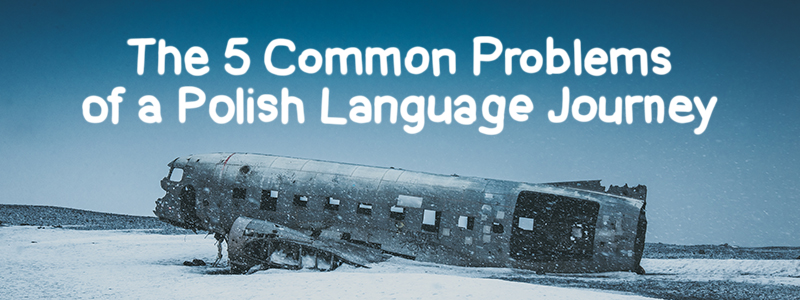
1. Unreasonable Expectations
PROBLEM: Think you can learn Polish in 5 minutes a day for 3 months? You’re the victim of bad marketing campaigns.
With more and more YouTubers showing off their “effortlessly speaking 12 languages” videos (and language learning apps paying them for product placement), there are more myths than ever thinking that language learning is either impossible or so “simple that anyone can do it with this one trick”.

SOLUTION: Set reasonable expectations.
According to the US government, Polish is ranked as a Category III language, which means you’ll need around 1,100 hours to achieve fluency across speaking, listening, reading, and writing.
Instead of getting frustrated in your first month of playing with an app for 5min a day, assume you’ll need 2-3 years of consistent work to become a proficient speaker.
(And if you’re having fun while learning? It’ll fly by.)
2. Bad Scheduling
PROBLEM: “I only have one day a week to study! I’ll have to cram it all in.”
“I don’t have time today. I’ll do it tomorrow.”
Do I need to elaborate further?
Habit trackers (such as my own, pictured above and available for free download) are a great way to measure your daily routine and keep disciplined.
3. Over- or Under-Spending
PROBLEM: More binary thinking:
Either that you can learn a language without spending any money at all….
…or buying every single resource on top of private tutoring and university classes.
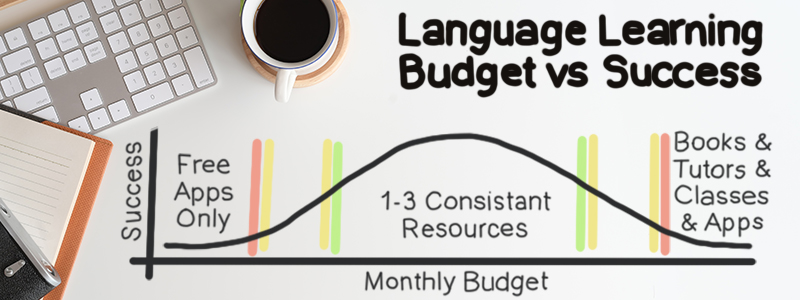
SOLUTION: Set a language learning budget.
Without any budget at all, you’re closing yourself off of some of the best resources on the market for learning Polish.
But when you spend too much money, you’re burying yourself in more resources than you could ever use in a lifetime.
Set a monthly budget (my opinion is between $25-100/month) so you can experiment with various resources, but have enough limits where you have to stick with them long enough to actually make progress.
4. Procrastinating Speaking
PROBLEM: “I’m not ready to speak yet! I’ll have my first conversations once I’m already fluent.”
Unfortunately for many of us, one of the biggest language learning paradoxes is that you’re not ready to start speaking until you’ve already started speaking.
SOLUTION: Set a definite date.
If you start by using independent tools like apps or books, decide by which date you will 100% try to have a basic, messy, gramatically-disasterous exchange by.
The video above goes further into language learning paradoxes, and how I forced myself to have my own first Polish conversations. (Way before I felt ready to!)
5. Language Difficulties
PROBLEM: Okay, I’ll say it: Polish is hard.
But if other adults can learn it, so can you.
SOLUTION: Stop with the negative self-talk.
When you get to a particularly tricky new word or piece of vocabulary, your inner critic might whisper in your ear: this is too hard!
But other Europeans move to Poland every year and learn the language. Polish people born abroad (like me) are constantly reconnecting with themselves as they relearn their heritage language.
It’s possible.
Whenever you’re plagued by self-doubt, stop for a moment and say: “It’s going to be hard, but other people have done it and so can I.”
BONUS: Connect to the Polish Learning Community
At this point, you have:
- Your vision goal,
- your map to get you there,
- immersion materials for enjoying the journey,
- and what to watch out for along the way.
Now, I invite you to be part of the online language learning community.
Depending on what social media you enjoy the most, here are a few places you can look to meet other Polish learners:
- Instagram – You can search keywords #learningPolish, #Polishstudent, #Polishteacher, or #Polishstudy. You can also follow me as @MultilingualMarissa for lots of memes and studygram.
- Facebook – You can search for “polyglots” for language learning groups, or check out the linked groups from the Polski Daily page.
- YouTube – The YouTube language learning community is a bit contentious with a lot of people claiming to be polyglots who speak 15 languages flawlessly (but with little proof outside of edited videos). Still, I recommend searching the keywords “language learning”, “language learning tips”, or “learning Polish” and find some fun vloggers. You can also follow me as Relearn A Language and see my (unedited) Polish journey there.
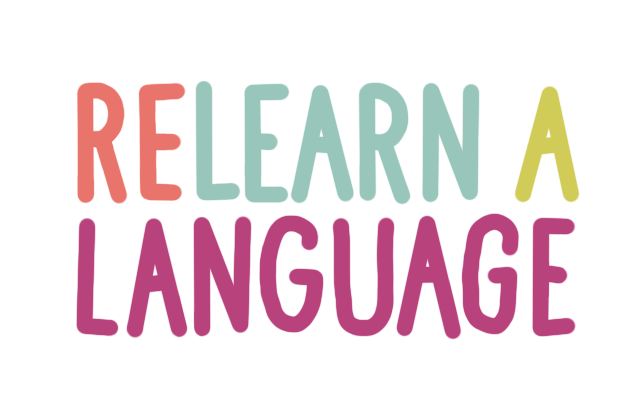
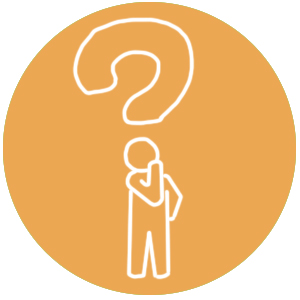
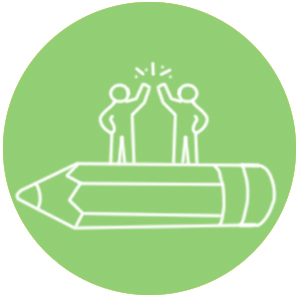

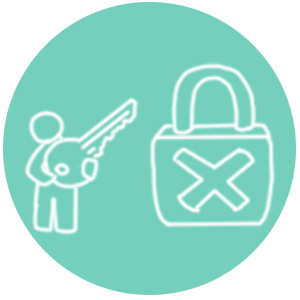



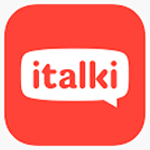

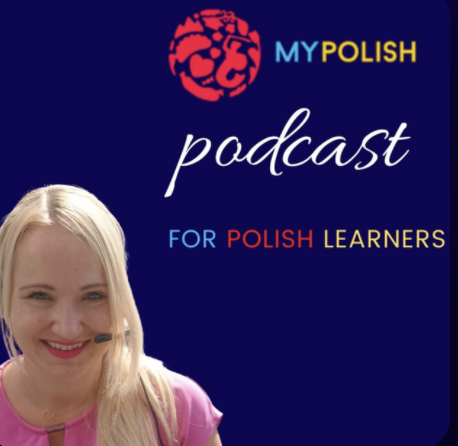
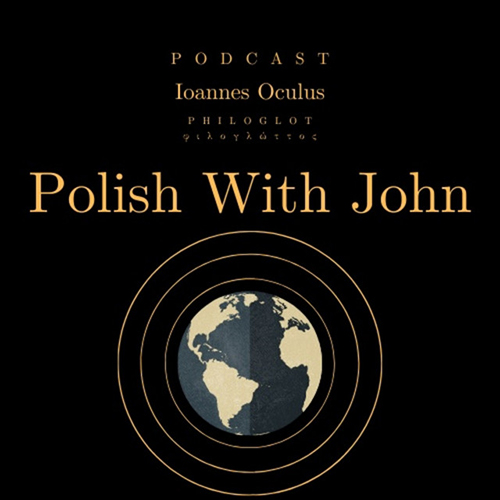




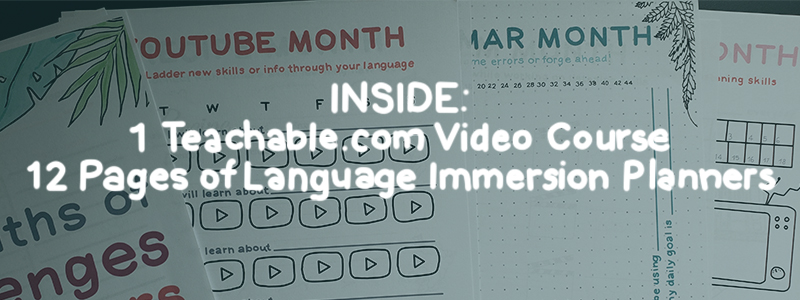
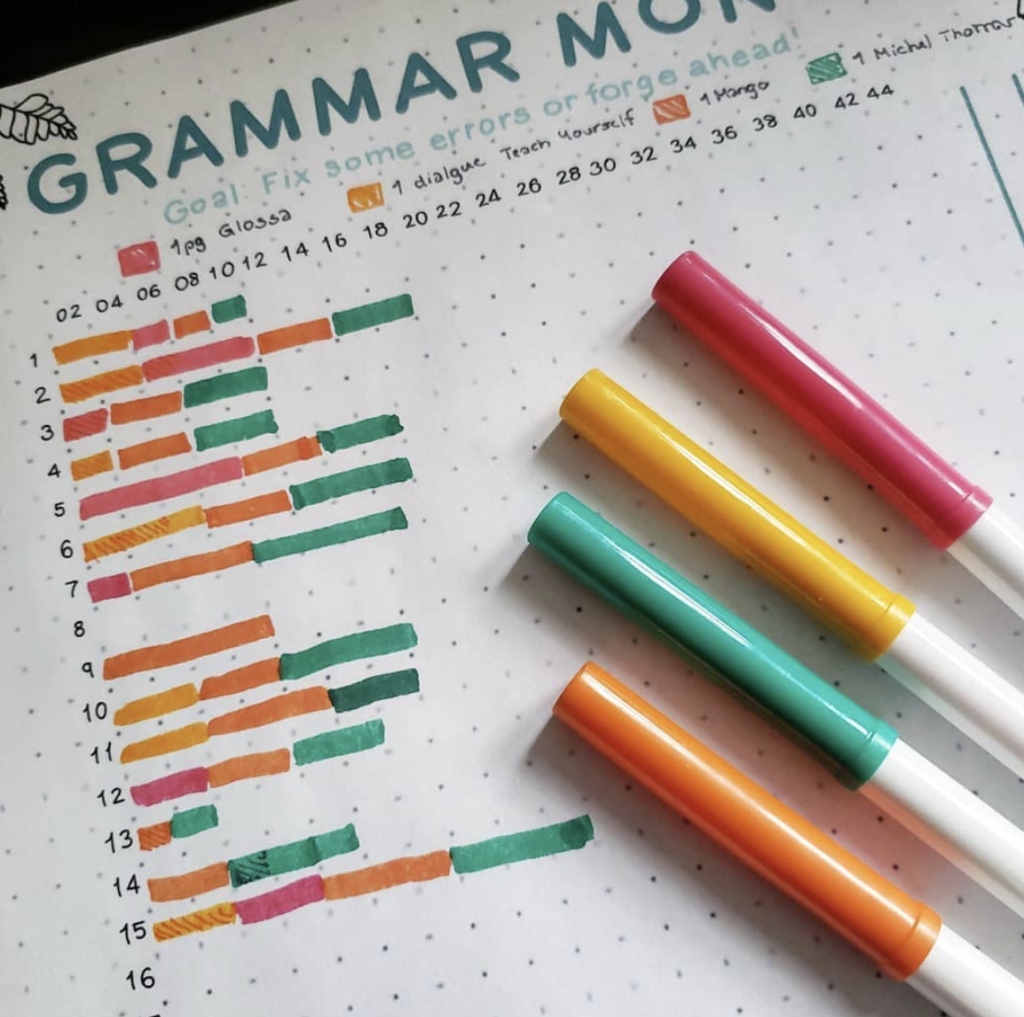
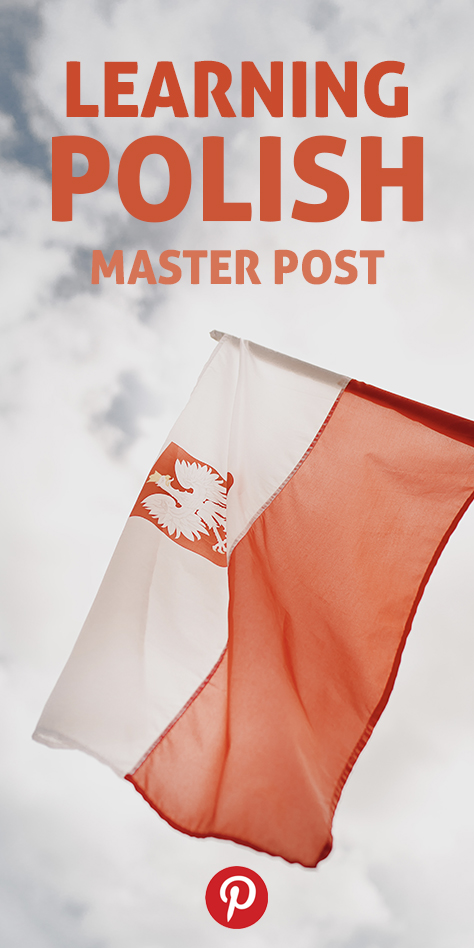
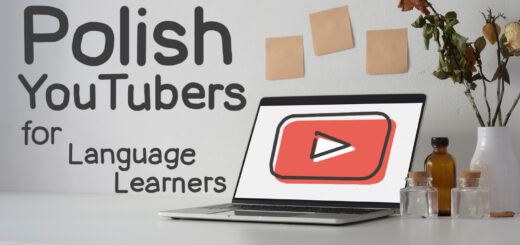
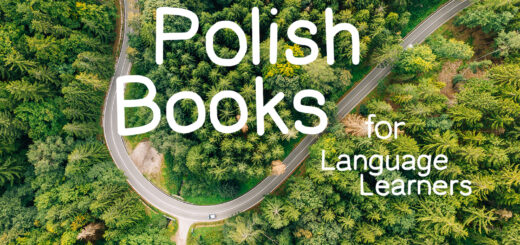
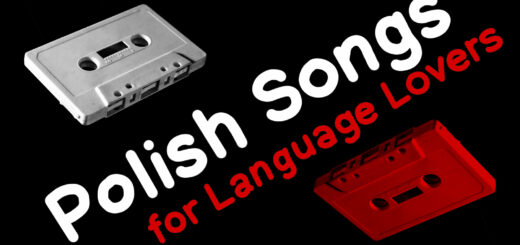
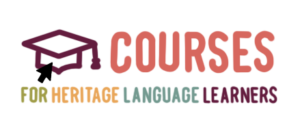
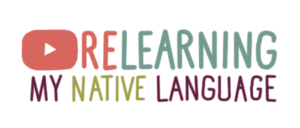
Hello Marissa, fantastic list of resources, thanks a lot.
I have been watching your Polish language journey on YouTube and was impressed with your progress. Do you still learn it? What is your current level and what resources do you use at the moment?
BTW, can you please check our Repeto courses, maybe you will find them interesting?
All the best!
Hi Pawel! I’m currently maintaining the Polish that I have, somewhere around A2 production and B2 comprehension 🙂 I took a really really demanding job in October and haven’t had much time to study or blog, but once my contract is over in June I’ll be back at it!